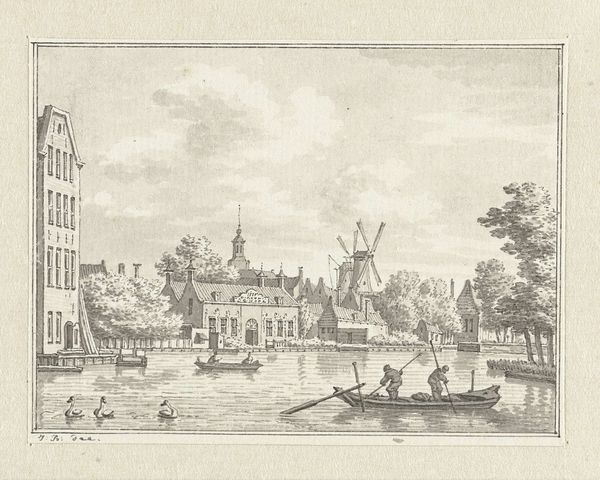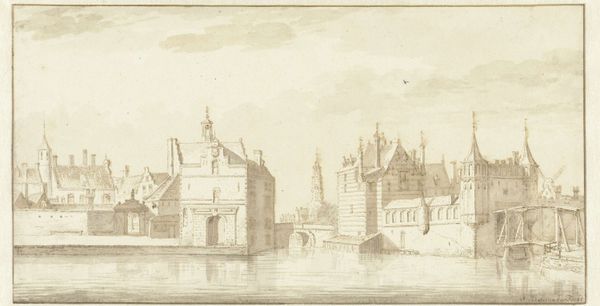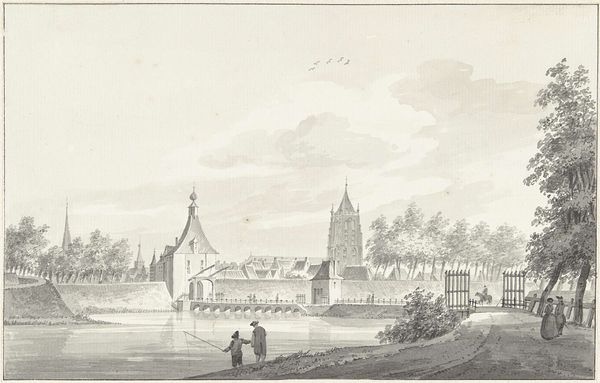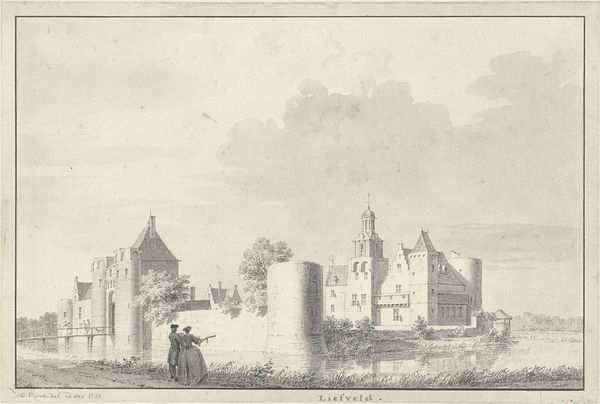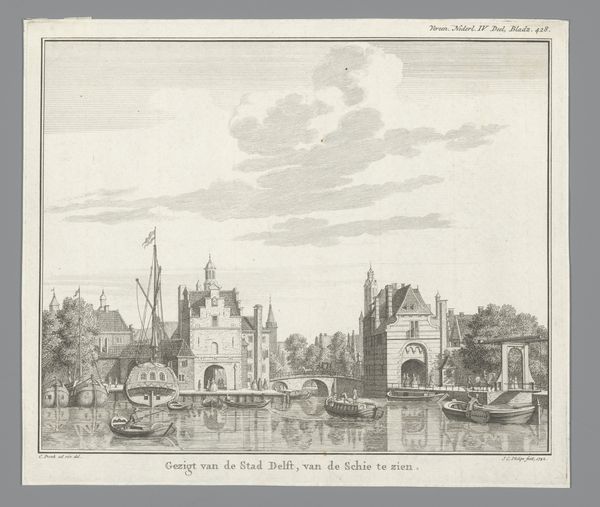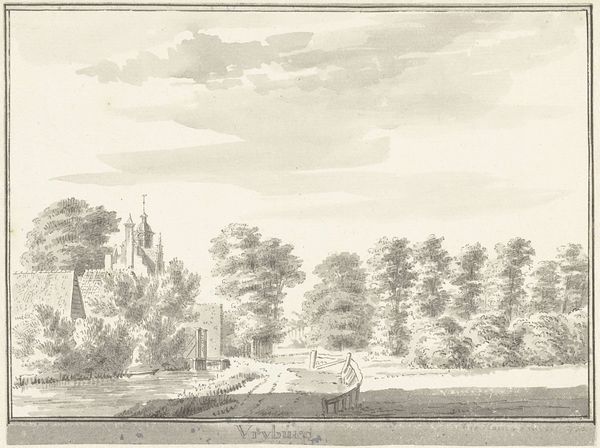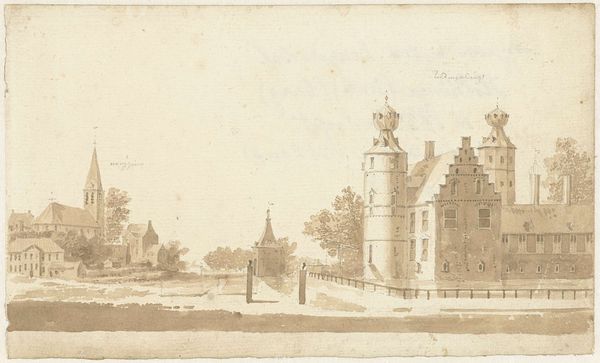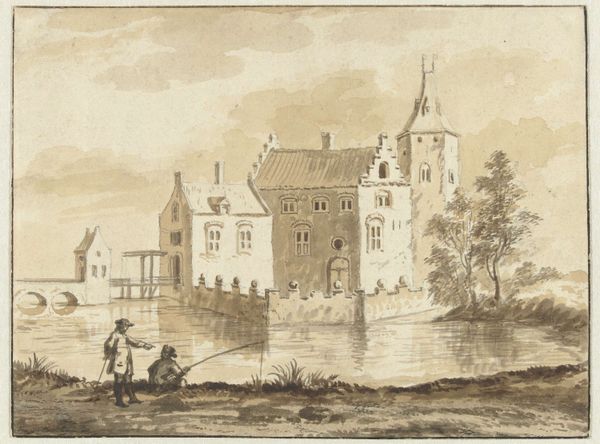
drawing, etching, pencil, engraving, architecture
#
drawing
#
neoclacissism
#
etching
#
pencil sketch
#
landscape
#
pencil
#
architecture drawing
#
cityscape
#
genre-painting
#
engraving
#
architecture
Dimensions: height 180 mm, width 270 mm
Copyright: Rijks Museum: Open Domain
Curator: This delicate etching and engraving by Paulus van Liender, titled "Huis en kerk te Oosterwijk," dates back to around 1750. Editor: It strikes me as serene. The soft grayscale palette evokes a quiet, reflective mood. The composition, anchored by the house and church, feels like a peaceful snapshot of a bygone era. Curator: Van Liender’s cityscape presents an idealized view, characteristic of Neoclassical landscape art. The detailed rendering of the architecture speaks to a society deeply rooted in its structures, both physical and social. We see represented in this work the power of the Church alongside secular authority. Editor: The steeple rising next to the ornate home creates a dialogue, doesn’t it? Notice how it invites reflection on the sacred and the domestic—juxtaposing aspiration with tangible existence? This speaks to enduring archetypes. Curator: I'd add that the presence of figures engaged in leisurely activities emphasizes a narrative about property and access to public resources, shaping the viewer’s understanding of leisure and who can enjoy it. Their existence is tied to those imposing edifices behind them. Editor: Absolutely. And while appearing effortless, this genre scene reminds the audience that societal symbolism exists in those figures in relation to the two most dominant building structures: one earthly, the other divine. Curator: Van Liender's artwork makes us question how power is represented and reinforced through idealized portrayals. Editor: This careful dance between symbol and reality reveals the layers of meaning woven into our visual narratives. It makes you think about visual persistence and societal archetypes that continue in current landscapes and public arenas. Curator: Exactly. "Huis en kerk te Oosterwijk" reminds us to always consider the historical and social forces shaping the scenes before us. Editor: Indeed—an invitation to see not just what’s there, but why it is.
Comments
No comments
Be the first to comment and join the conversation on the ultimate creative platform.


